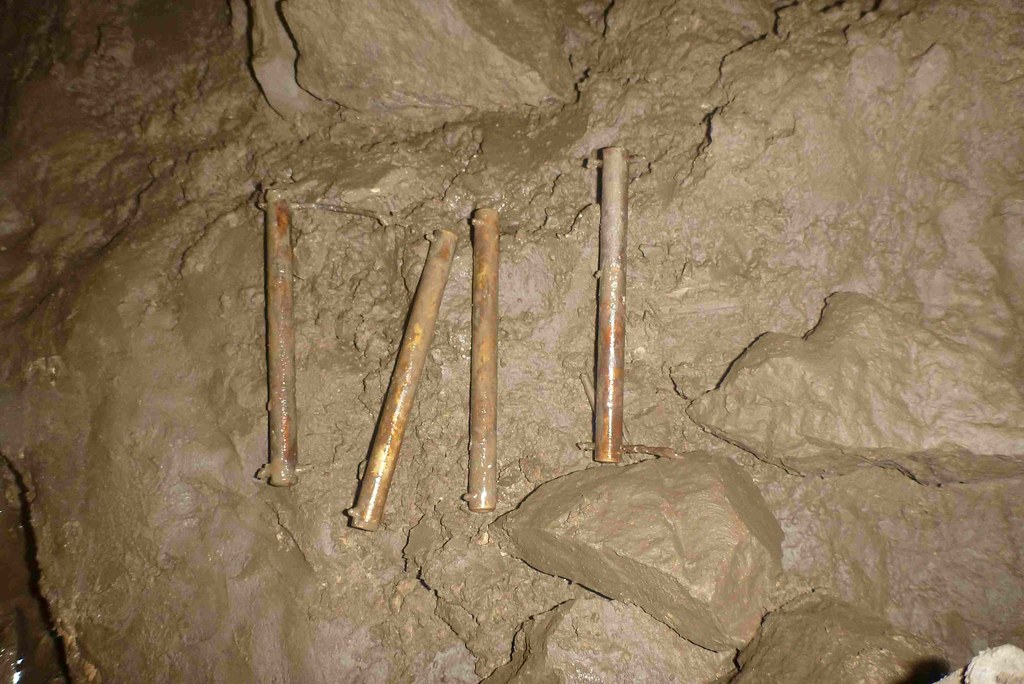Mark Wright
Active member
Pitlamp said:Electron ladders aren't really designed to be left in caves long term; this is likely to result in deterioration.
A properly constructed ladder (whether commercially or home made), which is carefully inspected for physical damage following each trip - and looked after correctly (i.e. cleaned & dried as soon as possible after use and occasionally dipped in a preserving substance such as lanolin) is very unlikely to fail.
Many examples of ladders breaking seem not to have had one or more of the above points properly adhered to.
Have to agree completely with Pitlamp.
The only broken ladders I've ever seen have been left down a cave for a long time. I've never known 'C' links breaking though.
I was brought up on ladders and did a lot of the Dales and Derbyshire classics on them before SRT really took off. GG main shaft was my most memorable - not just the climb but carrying a 400' lifeline rope and about 16 ladders up to the entrance on the back of my motorbike, with permission before you ask. The ride up there was more of a workout than the ladder climb.
We used to have a regular Tuesday night ladder making session at the TSG hut when I first joined in the early 80's. The TSG used to make them for Caving Supplies before I joined.
One of the problems was with the wire which often had a hemp core. It would get wet and then start to corrode the wire from the inside out so not always noticed during the visual examination. If ladders are stored in, e.g. a damp cellar, the core would never dry out. I wonder where the ladders MarkS mentions were stored after use?
I'm sure there was a serious accident due to this and Caving Supplies decided not to sell them anymore probably down to potential liabilty issues. I don't think it was one of theirs that failed.
Another issue was kinking the wires when coiling, particularly when using ladders with a 10" rung spacing where, as robjones mentions, the 'C' links are joined together to finish it off. Much less of a problem with 12" rung spacings. We had a combination of 10" and 12" spacing ladders when we rigged GG which did send me out of rhythm a few times.
Another problem was caused by uncoiling ladders by dropping them down the pitch instead of uncoiling them from the top. The ladder could fall through the gap between the rungs and when it was subsequently stepped on - because you didn't notice it - the wire would be permanently damaged.
I love the sound they make as they clank about when you climb them or as you scrape against the side of the passage with 2 on each arm. I always remembered the sound of them from the Beneath the Pennines films when I first started caving.
They might be 18th Century but I'd still rather do P8 and Giants on ladders. There are a few short lengths in the Ice Cream Trail in Rowter Hole that are definitely the most appropriate tool for the job.
I must confess to being grossly negligent in Giants as I don't usually bother with a lifeline on Garlands though I would on Geology.
With regard to the CRO lecture on potentially fatal falls of more than 2m, in industry, the majority of fatal falls are less than 2m.
Would it be considered grossly negligent to regularly free climb Idiots Leap in P8 without a lifeline?
I'm sure any insurance company would try their damnedest to get out of having to pay out ?5M.
Assuming the plaintiff didn't have a gun to their head and was just stupid enough to climb a ladder without a lifeline then I can't see any civil claim getting very far.
Mark




